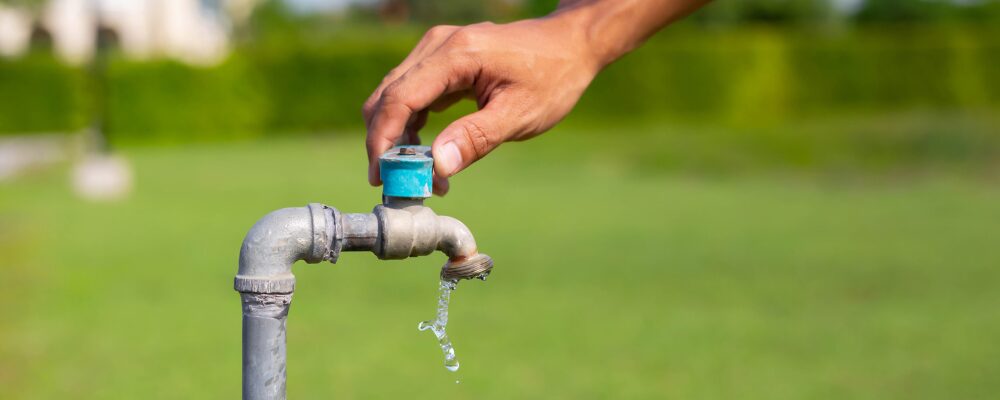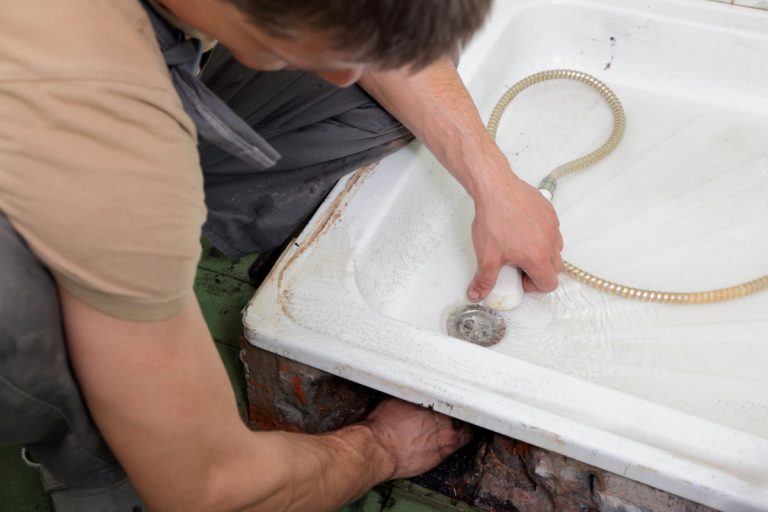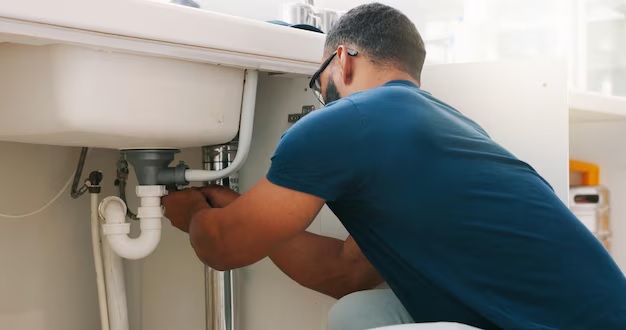
Water pressure is an often-overlooked but essential component of a well-functioning plumbing system. From a refreshing shower to efficiently operating appliances like dishwashers and washing machines, the pressure of the water that flows through your pipes directly affects your daily comfort and convenience. Low or high water pressure can cause a range of issues, from slow drainage to potential damage to pipes or appliances. Fortunately, understanding water pressure and applying the right techniques can help you maintain optimal pressure levels in your plumbing system. Below are the top 10 water pressure tips that can help improve your home’s plumbing, increase the lifespan of your pipes, and ensure you’re getting the most out of your water system.
1. Measure Your Water Pressure Regularly
Before addressing any issues, it’s crucial to know the current state of your water pressure. Water pressure that’s too high or too low can indicate underlying problems in your plumbing system. The ideal water pressure for most homes should fall between 45 and 60 psi (pounds per square inch).
To measure water pressure, you’ll need a pressure gauge, a simple device that attaches to an outdoor faucet or the water supply valve near your water meter. Checking your water pressure periodically will allow you to identify changes over time and catch problems early, preventing potential damage to your plumbing.
Tip: If your water pressure consistently reads outside of the recommended range, it may be time to take corrective action, either by adjusting your pressure regulator or consulting a plumber.
2. Install a Pressure Regulator
If your water pressure consistently exceeds 80 psi, it can put excessive strain on your plumbing system, potentially causing leaks or pipe bursts. Installing a pressure regulator can help manage and control water pressure, ensuring it stays within the ideal range.
A pressure regulator is a simple device that reduces high water pressure to a safe, consistent level. These regulators are typically installed at the main water line, where the water enters the house.
Tip: Pressure regulators are often adjustable, allowing you to fine-tune the pressure for optimal performance. A professional plumber can install and calibrate the regulator to suit your specific needs.
3. Check for Clogged Pipes
One of the most common causes of low water pressure is clogged pipes. Over time, minerals from hard water, debris, and other sediment can build up inside your pipes, reducing the flow of water. This obstruction hampers water pressure throughout the home, especially in fixtures farthest from the main water line.
To address this, inspect your plumbing for signs of low water pressure, particularly in isolated areas like the shower or faucet. If multiple fixtures are affected, the problem may lie within the plumbing itself. If left untreated, clogged pipes can lead to more severe blockages and potential water damage.
Tip: Regularly cleaning and maintaining your pipes, especially in hard water areas, can prevent mineral buildup. Using a water softener may also help reduce scaling inside your pipes.
4. Fix Leaks Promptly
Leaks are not only wasteful but can also cause a significant drop in water pressure. A leaking pipe or faucet can divert water away from your fixtures, leading to inconsistent water flow and low pressure. Whether it’s a small drip or a burst pipe, it’s important to address leaks as soon as they’re detected.
Inspect your plumbing system regularly for visible signs of leaks, including damp spots, water stains, or pooled water. Even small leaks can lead to water loss and, over time, a noticeable decrease in pressure.
Tip: If you suspect a hidden leak inside your walls or floors, consider using a moisture detector or calling a plumber to perform a leak detection test. Early detection is key to preventing further damage.
5. Install a Water Softener
In areas with hard water, mineral deposits can clog fixtures and pipes, which, over time, reduces water pressure. Installing a water softener can significantly improve the flow of water through your system by removing minerals like calcium and magnesium that contribute to scaling.
A water softener works by using resin beads or salt to neutralize the minerals in your water. The softened water prevents mineral buildup in your pipes, appliances, and fixtures, improving water pressure and prolonging the lifespan of your plumbing.
Tip: If you live in an area with hard water, investing in a high-quality water softener can improve both the efficiency of your plumbing and the longevity of your appliances.
6. Use Flow Restrictors Wisely
Flow restrictors are devices designed to limit the amount of water that flows through a faucet or showerhead. While they are often seen as a tool to conserve water, they can also be helpful in managing pressure. If your home’s water pressure is too high, a flow restrictor can help reduce the impact by limiting the flow rate at your faucets and showers, maintaining a balanced, comfortable water stream.
Tip: If you experience high water pressure in specific fixtures, consider installing a flow restrictor in the affected area. However, be mindful not to reduce water flow too much, as this could affect your daily routines and appliance functionality.
7. Clean Aerators and Showerheads
Another common cause of reduced water pressure is the accumulation of mineral deposits in faucet aerators and showerheads. Over time, these minerals can clog the tiny holes in the fixtures, resulting in uneven or low water flow.
Cleaning or replacing aerators and showerheads is an easy and cost-effective way to restore water pressure in specific areas of your home. Remove the aerator or showerhead, soak it in a solution of vinegar and water to dissolve the mineral buildup, and then rinse it thoroughly before reinstalling.
Tip: Perform this cleaning process every few months to ensure optimal water flow and prevent clogs from developing in the first place.
8. Inspect Your Water Meter Valve
In some cases, a simple problem with the water meter valve can cause low water pressure. If this valve is not fully open, it can restrict the flow of water into your home, leading to reduced pressure throughout your plumbing system.
Locate your water meter valve (usually near the water meter or the main water shut-off valve) and ensure it is fully open. If it appears to be malfunctioning or stuck, call a plumber to address the issue.
Tip: If your water pressure issues are localized to just one fixture, the problem could be isolated to the valve serving that specific area. Adjusting the valve or replacing it may resolve the issue.
9. Consider Pipe Replacement
Old or corroded pipes can cause a significant reduction in water pressure. Over time, galvanized steel and iron pipes corrode, reducing their diameter and impeding water flow. If you have an older home with aging pipes, especially if the water pressure has declined significantly over the years, it may be time for a pipe replacement.
Modern materials such as copper, PEX, or PVC are more resistant to corrosion and can improve water flow throughout your home. Replacing old pipes not only boosts water pressure but also eliminates the risk of leaks or pipe bursts.
Tip: Consult with a professional plumber if you suspect that your home’s plumbing system is outdated. Replacing old pipes can be a worthwhile investment in the long-term efficiency and safety of your plumbing.
10. Consult a Professional Plumber
If you’ve tried all the above tips and are still experiencing issues with water pressure, it’s time to consult a professional plumber. A licensed plumber can conduct a thorough assessment of your plumbing system, identify the root cause of your low or high water pressure, and recommend the best course of action.
Professional plumbers can also provide services such as installing or repairing pressure regulators, replacing old pipes, and diagnosing more complex plumbing problems that may not be visible to the untrained eye.
Tip: Don’t hesitate to call in a plumber for a consultation if you’re unsure about the cause of your water pressure problems. Their expertise can save you from costly mistakes and ensure your plumbing operates smoothly.
Conclusion
Maintaining optimal water pressure is a critical component of a well-functioning plumbing system. Whether you’re experiencing low water pressure or dealing with high pressure that could damage your pipes, taking proactive steps can greatly enhance the performance of your plumbing system. Regular inspections, the installation of pressure regulators and water softeners, and addressing clogs and leaks early can all contribute to better water pressure. By following these 10 essential tips, you’ll ensure that your plumbing remains in excellent condition, your appliances operate efficiently, and your daily routines run smoothly.





